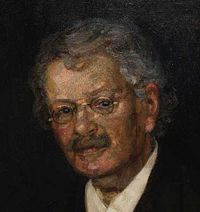Stockholm school (economics)
| Schools of economics |
| Pre-modern |
|---|
| Early Modern |
| Modern |
|
Classical Economics |
| Twentieth-century |
|
Institutional economics · Stockholm school |

The Stockholm school, or Stockholmsskolan, is a school of economic thought. It refers to a loosely organized group of Swedish economists that worked together, in Stockholm, Sweden primarily in the 1930s. Stockholm school had at the same time as John Maynard Keynes but independently came to the same conclusions on the Macro economics and the theories of Demand and Supply. They like Keynes, were inspired by the works of Knut Wicksell, a Swedish economist at the turn of the century 1900.
Two of the most prominent members of the Stockholm school were Stockholm School of Economics professors Gunnar Myrdal and Bertil Ohlin. The movements name, "the Stockholm school," was launched in an article by Bertil Ohlin in the influential Economic Journal in 1937. The article was published in response to the publication of Maynard Keynes' magnum opus General Theory of Employment, Interest and Money in 1936, and its purpose was to draw international attention to the Swedish discoveries in the field, many of which had predated Keyneses discoveries.
Myrdal and Ohlin went on to further develop their theories, and in so doing they developed the intellectual underpinnings and theoretical basis of the modern Northern European welfare state. Their theories were embraced and implemented as national policy by the two powerful arms of the Swedish labor movement; the Swedish Social Democratic Party and the national labor union the Swedish Trade Union Confederation. In the post-World War II geopolitical situation with two rival predatory political blocks, their theories also got wide international appeal as a "third way," i.e. a middle way between a capitalist economy and a socialist economy. The objective of the "third way" being to achieve high levels of social equality, without stifling private entrepreneurship.
Leading members
- The Stockholm School of Economics, and later Stockholm University, professor Gunnar Myrdal spent many years in the U.S. working the book An American Dilemma: The Negro Problem and Modern Democracy, an investigation into the situation of African Americans, funded by the Carnegie Foundation. Gunnar Myrdal co-authored together with his wife Alva Myrdal the book Kris i befolkningsfrågan (Swedish for 'Crisis in the population issue'), published in 1934. The book served as a major source of inspiration for the construction of the modern Swedish welfare state, relying heavily on government intervention and social engineering to create a "people's home" (Swedish: "Folkhemmet"). The work has later been critized for its discussions on racial issues. Myrdal received the Bank of Sweden Prize in Economic Sciences in Memory of Alfred Nobel (also known as the "Nobel Prize for Economics") in 1974.
- The Stockholm School of Economics professor Bertil Ohlin was party leader of the Swedish Liberal People's Party (Sweden), the largest opposition party in the Swedish Parliament, for over twenty years (1944-1967), battling the powerful incumbent Social Democrat government. Professor Ohlin developed, together with professor Eli Heckscher, the world-wide standard economic model of international trade, the Heckscher-Ohlin theory. Ohlin received the Bank of Sweden Prize in Economic Sciences in Memory of Alfred Nobel (also known as the "Nobel Prize for Economics") in 1977.
- Gustav Cassel, professor of economics at the Stockholm University, created the standard mathematical formula for Purchasing Power Parity, a central theory in microeconomics.
- Dag Hammarskjöld, economist. 2nd Secretary-General of the United Nations. In office 10 April 1953 – 18 September 1961 (when he died in a plane crash on a peace keeping mission to Kongo). Dag Hammarskjöld is the only person to have been awarded the Nobel Peace Prize posthumously (Alfred Nobel's testament explicitely states that the prize should only be awarded to the living).
Other members, such as Erik Lundberg, continued as business cycle oriented economists.
ReferencesISBN links support NWE through referral fees
- Patinkin, Don (1978). On the Relation between Keynesian Economics and the ‘Stockholm School’. The Scandinavian Journal of Economics 80 (2): 135–143.
Credits
New World Encyclopedia writers and editors rewrote and completed the Wikipedia article in accordance with New World Encyclopedia standards. This article abides by terms of the Creative Commons CC-by-sa 3.0 License (CC-by-sa), which may be used and disseminated with proper attribution. Credit is due under the terms of this license that can reference both the New World Encyclopedia contributors and the selfless volunteer contributors of the Wikimedia Foundation. To cite this article click here for a list of acceptable citing formats.The history of earlier contributions by wikipedians is accessible to researchers here:
The history of this article since it was imported to New World Encyclopedia:
Note: Some restrictions may apply to use of individual images which are separately licensed.